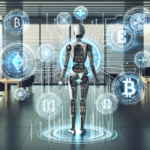The Rise of Deep Learning in Trading Systems
Understanding Deep Learning
Deep learning, a subset of artificial intelligence, mimics the way the human brain operates to process information. It involves neural networks with numerous layers that can analyze vast amounts of data. This capability is particularly potent in the financial markets, where massive datasets are generated every second.
How Deep Learning Differs from Traditional Algorithms
Traditional trading algorithms primarily rely on statistical analysis and historical data. They typically focus on obvious patterns and relationships. In contrast, deep learning algorithms can uncover hidden insights from unstructured data. They are capable of recognizing complex patterns and trends that might escape conventional analytical approaches.
Improving Predictive Accuracy
One of the most significant advantages of deep learning in trading systems is its ability to enhance predictive accuracy. By processing vast amounts of historical market data along with alternative data sources like news articles and social media sentiment, deep learning models can build a more comprehensive view of market dynamics. Consequently, they can produce more accurate predictions of price movements.
Real-Time Analysis
Another area where deep learning excels is in real-time analysis. Traditional algorithms often struggle to keep up with the rapid pace of market changes. Deep learning models, however, can analyze incoming data streams instantaneously, allowing traders to act quickly in response to market fluctuations. This capability is crucial in high-frequency trading, where milliseconds can make a significant difference in profits.
Applications of Deep Learning in Trading
Deep learning algorithms have found numerous applications in various aspects of trading. Here are some of the most exciting areas they are reshaping:
Algorithmic Trading
Algorithmic trading relies on pre-defined rules and statistical models to automate trading decisions. With deep learning, these algorithms can continuously learn from new data, allowing them to adapt to changing market conditions dynamically. This adaptability is a game-changer, as it enables more nuanced and responsive trading strategies.
Portfolio Management
Portfolio managers are increasingly turning to deep learning to optimize investment strategies. These models can analyze risk and reward profiles more effectively than traditional methods, leading to better asset allocation decisions. By leveraging predictive analytics, portfolio managers can reduce risk while maximizing returns.
Sentiment Analysis
Understanding market sentiment is crucial for successful trading. Deep learning models can sift through vast amounts of unstructured data, such as news articles, social media posts, and financial reports, to determine public sentiment towards a stock or market. This analysis provides traders with valuable insights that traditional methods may overlook.
Challenges of Implementing Deep Learning
Despite its promise, implementing deep learning in trading systems comes with challenges.
Data Quality and Quantity
Deep learning models require substantial amounts of high-quality data to function optimally. In financial markets, data can be noisy, inconsistent, or incomplete. Ensuring that the data fed into these models is accurate and representative is essential, as poor data can lead to misleading predictions.
Model Interpretability
Another challenge is the”black box” nature of deep learning models. While they may offer high accuracy, understanding how they arrive at their predictions can be difficult. This lack of transparency can be concerning for traders who want to validate their strategies and decision-making processes.
Future of Deep Learning in Trading
Looking ahead, the integration of deep learning in trading systems is expected to deepen. As technology continues to advance, several trends are likely to shape the future landscape.
Increased Automation
With the continued evolution of machine learning, we can expect even greater automation in trading systems. Deep learning will play a pivotal role in this transition, allowing for fully automated trading strategies that can adapt in real time to market conditions.
Greater Collaboration Between Humans and Machines
While deep learning algorithms will become increasingly sophisticated, the human touch will remain crucial in the trading world. Traders will still be needed to interpret the results, assess risks, and apply human judgment to inform their strategies.
Simplified Tools for Less Tech-Savvy Traders
As deep learning technologies become more mainstream, we may see the emergence of user-friendly tools designed for less tech-savvy traders. This democratization of access to advanced trading strategies could level the playing field, enabling individuals or smaller firms to compete with institutional giants.
The Role of Regulators
As deep learning systems become more prevalent in trading, the role of regulators will be crucial. Regulators need to keep pace with technological advancements to ensure market fairness and transparency. They will need to address issues around algorithmic trading, data privacy, and the ethical use of AI in finance.
Setting Standards for AI in Finance
Policymakers may seek to establish standards and guidelines around the use of AI in trading. This includes defining acceptable risk levels and ensuring that trading algorithms are monitored and audited regularly to prevent market manipulation.
Case Studies in Deep Learning and Trading
Several firms have already started to harness deep learning in trading, offering promising case studies.
Citadel LLC
Citadel, one of the largest hedge funds globally, has invested heavily in machine learning and deep learning. Their trading systems leverage advanced analytics to predict market trends, allowing for better liquidity and improved execution.
Two Sigma Investments
Two Sigma employs machine learning techniques, including deep learning, to analyze data and inform their trading strategies. They have been known to integrate non-traditional data sources, such as satellite imagery, to forecast market movements effectively.
Goldman Sachs
Goldman Sachs has shown interest in utilizing deep learning algorithms for various applications, including risk management and trade execution. Their approach highlights how traditional financial institutions are adapting to new technologies to maintain their competitive edge.
Final Thoughts on Deep Learning in Trading Systems
Deep learning is not just a passing trend; it’s a significant innovation reshaping the trading landscape. As it continues to evolve, traders and financial institutions must adapt and embrace these technologies to thrive in the increasingly competitive market environment. While challenges remain, the benefits inherent in employing deep learning algorithms are undeniably paving the way for more intelligent, adaptive, and efficient trading systems. The future of trading may very well hinge on how effectively these technologies are leveraged, making deep learning an essential consideration for any forward-thinking trader.








